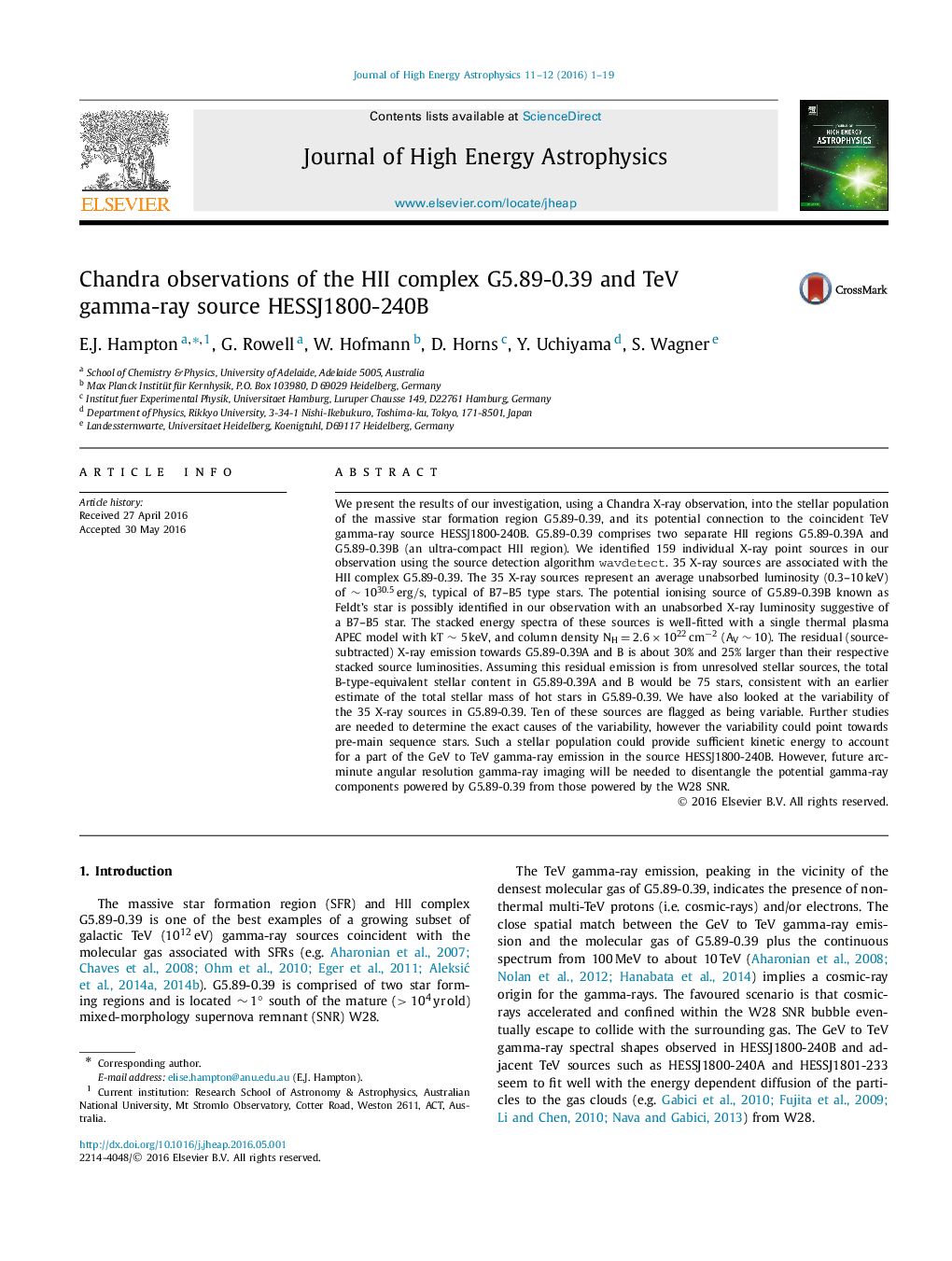| Article ID | Journal | Published Year | Pages | File Type |
|---|---|---|---|---|
| 1778597 | Journal of High Energy Astrophysics | 2016 | 19 Pages |
Abstract
We present the results of our investigation, using a Chandra X-ray observation, into the stellar population of the massive star formation region G5.89-0.39, and its potential connection to the coincident TeV gamma-ray source HESSJ1800-240B. G5.89-0.39 comprises two separate HII regions G5.89-0.39A and G5.89-0.39B (an ultra-compact HII region). We identified 159 individual X-ray point sources in our observation using the source detection algorithm wavdetect. 35 X-ray sources are associated with the HII complex G5.89-0.39. The 35 X-ray sources represent an average unabsorbed luminosity (0.3-10âkeV) of â¼1030.5erg/s, typical of B7-B5 type stars. The potential ionising source of G5.89-0.39B known as Feldt's star is possibly identified in our observation with an unabsorbed X-ray luminosity suggestive of a B7-B5 star. The stacked energy spectra of these sources is well-fitted with a single thermal plasma APEC model with kT â¼ 5âkeV, and column density NH=2.6Ã1022cmâ2 (AVâ¼10). The residual (source-subtracted) X-ray emission towards G5.89-0.39A and B is about 30% and 25% larger than their respective stacked source luminosities. Assuming this residual emission is from unresolved stellar sources, the total B-type-equivalent stellar content in G5.89-0.39A and B would be 75 stars, consistent with an earlier estimate of the total stellar mass of hot stars in G5.89-0.39. We have also looked at the variability of the 35 X-ray sources in G5.89-0.39. Ten of these sources are flagged as being variable. Further studies are needed to determine the exact causes of the variability, however the variability could point towards pre-main sequence stars. Such a stellar population could provide sufficient kinetic energy to account for a part of the GeV to TeV gamma-ray emission in the source HESSJ1800-240B. However, future arc-minute angular resolution gamma-ray imaging will be needed to disentangle the potential gamma-ray components powered by G5.89-0.39 from those powered by the W28 SNR.
Related Topics
Physical Sciences and Engineering
Physics and Astronomy
Astronomy and Astrophysics
Authors
E.J. Hampton, G. Rowell, W. Hofmann, D. Horns, Y. Uchiyama, S. Wagner,
